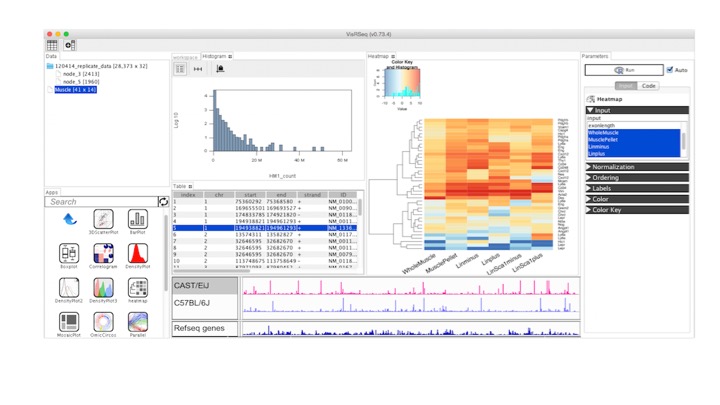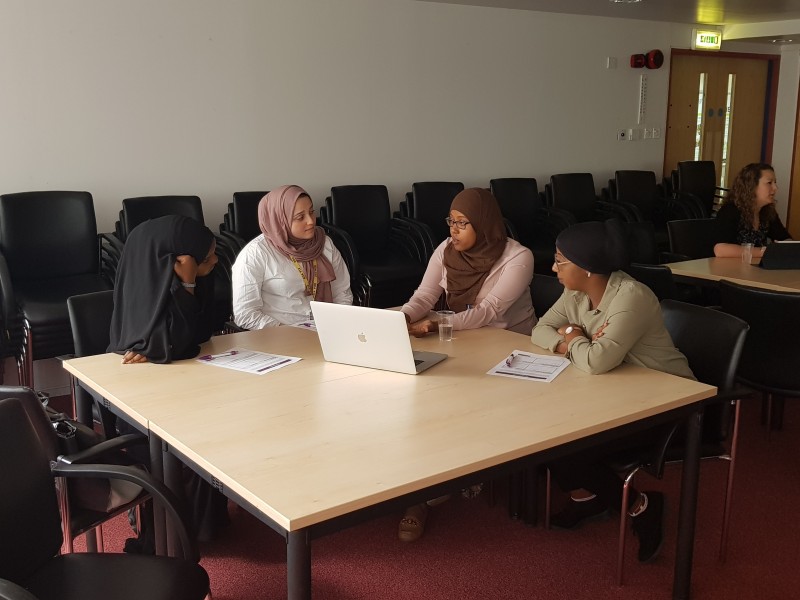By Sophie Arthur
October 8, 2019
Time to read: 6 minutes
Today is Ada Lovelace Day. A day where we celebrate the achievements of women working in STEM fields (science, technology, engineering and maths) to inspire the next generation and advance our scientific knowledge. Ada Lovelace was a pioneer and published the first full computer program in 1843. She also foresaw the exciting creative potential of computing, moving beyond simply numbers and code. If only she could see what we, and particularly women in STEM, are achieving with the limitless potential of computing now. As part of our celebrations on Ada Lovelace Day, we want to highlight the application of computer science to medicine and health data and how it is still only the beginning of a bright future. We sat down and chatted to one of our bioinformaticians here at the LMS, Marian Dore, to find out more about what computational biology can achieve and to talk about what life as a bioinformatician is really like.
Bioinformatics is an interdisciplinary field of science that can combine biology, computer science, mathematics and statistics to analyse and interpret biological trends and results from huge amounts of data. But the impact of bioinformatics today is far reaching as it can help us to generate data-driven hypotheses or even aid with research questions in so many different fields such as agriculture, climate change and defence to name a few.
Perhaps it’s greatest and most important impact though is in its application to biomedical research. In personalised medicine, for example, doctors will be able to prescribe the best and most effective treatment based on the individual’s genetics and physiology, rather than the current trial and error methods. Bioinformatics can help us advance in disease prevention also. By unravelling the genetic mechanisms of disease, we can make preventative steps even before the onset of the disease. Similarly, in drug development, this approach can accelerate the identification, validation and development of new drug targets by linking disease characteristics to mutations in the DNA and much more, including gene therapy. As you can tell, the applications are endless.
A great example of bioinformatics in action that you may be familiar with is the Human Genome Project. It was a scientific research community effort tasked with the identification of billions of nucleotides – the building block units of a DNA sequence – that make up human DNA. All to gain crucial information about our genes and the diseases associated with them, so you can see the immense potential this field has to improve human life.
Life as a bioinformatician
There is one word that summarises life as a bioinformatician, and that is diversity. From the day to day role, to the applications of the field, to the background of our bioinformaticians and their routes into the field.
Marian is one of our five Bioinformatics team members here at the LMS. Her background is in computer science. However, her passion really lied in the medical and health fields, so was drawn to bioinformatics to bridge her background with her love. Whilst you can do degrees in Bioinformatics now, that is not the only route into the field. In fact, anyone with a STEM background can train to be a bioinformatician if they want to add some more strings to their bow. Our Bioinformatics team here at the LMS have come from all different backgrounds; some from a maths background, some from a scientific background and some from an IT background. Each team member offers a different perspective to solving the problems that the team are presented with in their day to day tasks, and if one of them needs to get up to speed with the biology in a problem, or if one of them needs a bit more help understanding the stats in a particular analysis, they can find the help from one of their team members. The diverse backgrounds working towards a common problem can help to reach their goals much more quickly.
No two days as a bioinformatician are the same either. While two major components of the work include data analysis and software development, those skills are being applied to a variety of projects in a range of different research areas. One day could involve working with a research group to perform some analysis, and the next you are working with another group on a machine learning project. Later that day you could be writing the methods section for a publication or coding the next piece of software for the analysis of another large dataset and working on the best way to visualise all that data, or even training a colleague in a particular technique.

Coding with purpose
It was very clear from our chat with Marian that she exudes passion for her work, but also for promoting bioinformatics for the next generation. She shared many stories about how, no matter the scenario, whenever she gets asked about her job, she receives lots of blank looks in reply. The field is generally seen as unfamiliar to those outside of the circle, and even to some who do have STEM backgrounds, and many may get scared off by the mathematical aspects that it contains, without seeing that the impact it can have is very real and how the work can affect real life.
Many school students are now learning to code in Python and Scratch in schools, and younger and younger students are being introduced to the world of coding. More and more students are learning why this field and its applications are real and incredibly important, which we hope will inspire and give confidence to many computational biologists of the future, as getting into a bioinformatics career isn’t the difficulty. Instead it is people not knowing about the field in the first place which we need to address.

The future of bioinformatics is bright. Not only is it helping to guide our research hypotheses which is helping us to accelerate drug discovery, but as we have mentioned throughout this piece, its applications are limitless. There is still so much that we have to learn, which this field is going to have such significant impacts on the time it takes to discover and test robustly. It has the potential to revolutionise medicine and, as such, society which is both exciting and promising. So, this is what we are celebrating this Ada Lovelace Day; the limitless potential of computational biology, and the people working in the field who are making this happen.